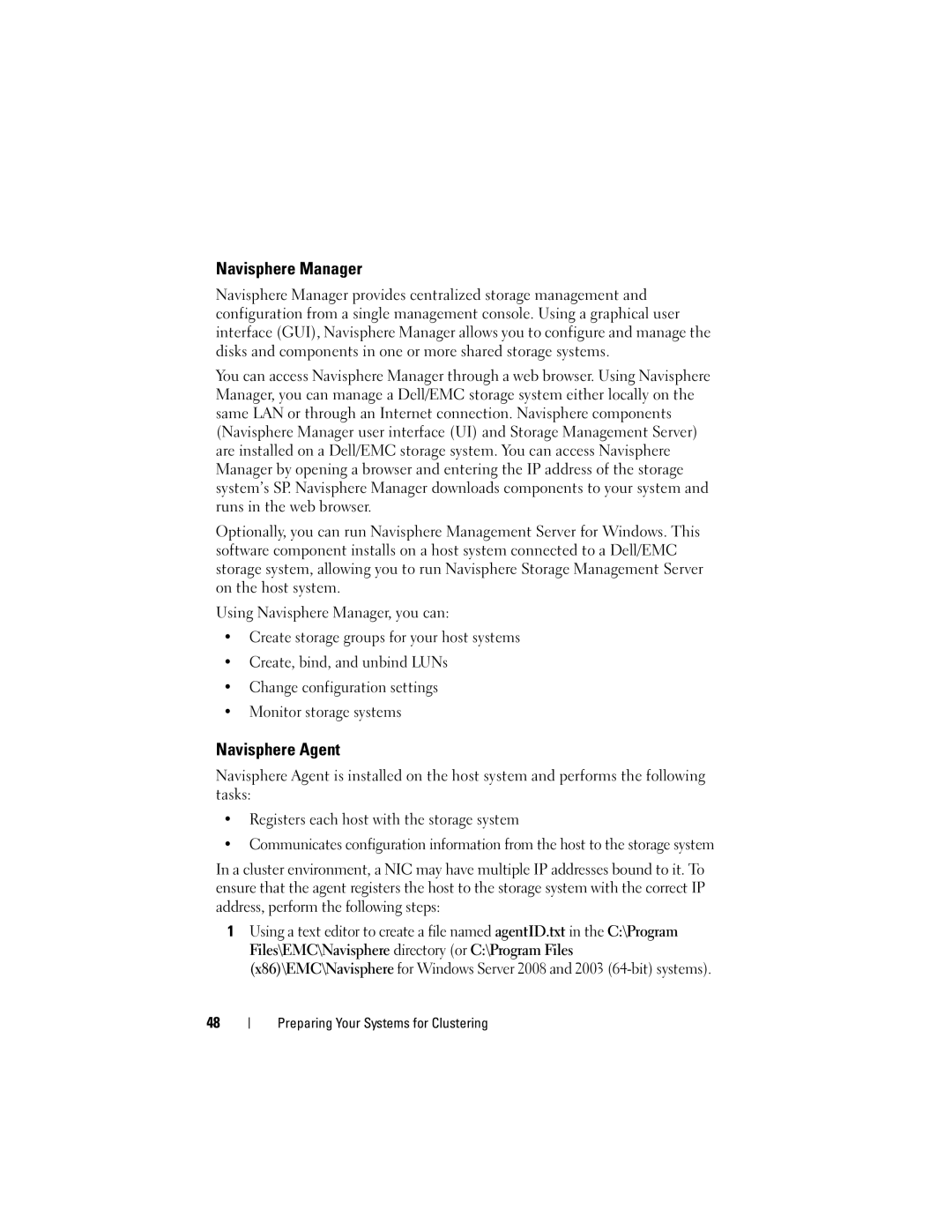Navisphere Manager
Navisphere Manager provides centralized storage management and configuration from a single management console. Using a graphical user interface (GUI), Navisphere Manager allows you to configure and manage the disks and components in one or more shared storage systems.
You can access Navisphere Manager through a web browser. Using Navisphere Manager, you can manage a Dell/EMC storage system either locally on the same LAN or through an Internet connection. Navisphere components (Navisphere Manager user interface (UI) and Storage Management Server) are installed on a Dell/EMC storage system. You can access Navisphere Manager by opening a browser and entering the IP address of the storage system’s SP. Navisphere Manager downloads components to your system and runs in the web browser.
Optionally, you can run Navisphere Management Server for Windows. This software component installs on a host system connected to a Dell/EMC storage system, allowing you to run Navisphere Storage Management Server on the host system.
Using Navisphere Manager, you can:
•Create storage groups for your host systems
•Create, bind, and unbind LUNs
•Change configuration settings
•Monitor storage systems
Navisphere Agent
Navisphere Agent is installed on the host system and performs the following tasks:
•Registers each host with the storage system
•Communicates configuration information from the host to the storage system
In a cluster environment, a NIC may have multiple IP addresses bound to it. To ensure that the agent registers the host to the storage system with the correct IP address, perform the following steps:
1Using a text editor to create a file named agentID.txt in the C:\Program Files\EMC\Navisphere directory (or C:\Program Files (x86)\EMC\Navisphere for Windows Server 2008 and 2003
48
